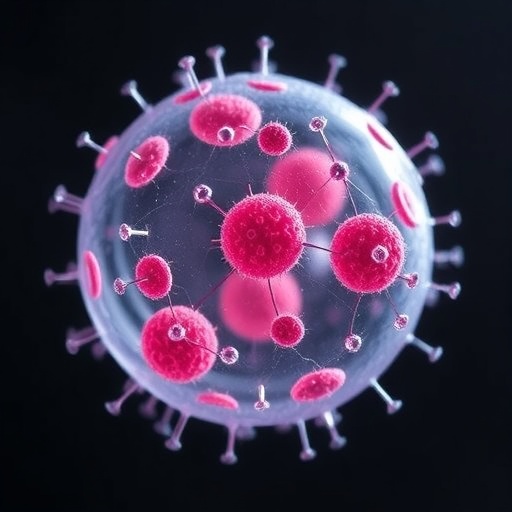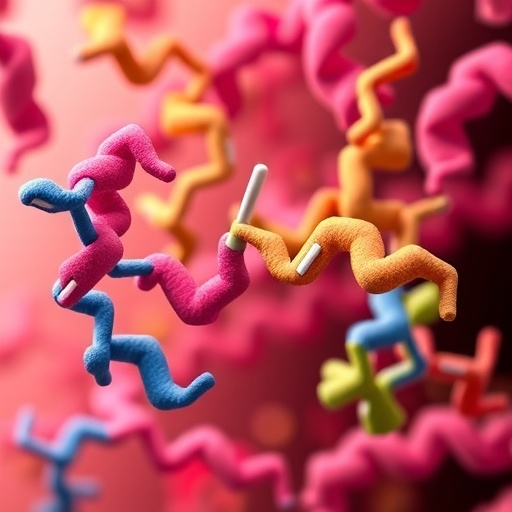In a remarkable leap forward for cellular biology and biomedical engineering, researchers at Stanford Medicine have unveiled a groundbreaking device that can manipulate cells mid-air with invisible forces. This technology, aptly named Electro-LEV, employs electromagnetic levitation to delicately and precisely sort cells based on their intrinsic physical properties without the need for traditional invasive or damaging labels and reagents. This innovation heralds a new era of cell sorting that not only promises more efficient laboratory processing but also holds significant clinical potential, especially for handling precious biopsy samples in cancer diagnostics.
At the heart of Electro-LEV lies a deceptively simple yet elegantly effective principle: magnetism and cell density govern the vertical positioning of cells within a narrow glass channel. Traditionally, researchers relied on fluorescent tags or centrifugal forces to differentiate and separate cells. However, such methods often come with drawbacks including chemical exposure, cell damage, or costly reagents. In direct contrast, the new Electromagnetic Levitation system gently levitates cells in a paramagnetic solution between two opposing magnets placed millimeters apart, balancing gravitational and magnetic forces to achieve precise spatial sorting of diverse cell types.
The original magnetic levitation concept, pioneered over a decade ago by Dr. Gozde Durmus, demonstrated that nearly any living cell exhibits inherent magnetic susceptibility—an intrinsic magnetic property that allows it to respond subtly but measurably to an external magnetic field gradient. By positioning two neodymium magnets so that their like poles face each other (north to north, and south to south) separated by a thin glass capillary, cells in paramagnetic medium experience a vertical magnetic force that opposes gravity. The cells then “float” to specific equilibrium heights reflective of their density, making it possible to distinguish between cell types based on levitation altitude.
While intriguing, this early version of magnetic levitation was limited by its static nature and relatively small sorting precision. Each experimental adjustment demanded preparation of a new sample with altered paramagnetic concentration, a time-consuming and cumbersome process that restricted its practical usability for real-time sorting applications. Moreover, overlapping levitation heights of similar cells made clear separation challenging, prompting the search for technological advancements to refine control over the levitation conditions.
Electro-LEV is that advancement. It replaces the passive, fixed magnets with electromagnetic coils wrapped around the magnets, allowing researchers to modulate the strength of the magnetic field dynamically by adjusting electrical currents. This real-time tunability transforms cell levitation from a static observation into a fully controllable process where cells can be manipulated vertically in the capillary with exceptional precision, drastically improving sorting resolution. The capillary itself bifurcates into two collection outlets—top and bottom—guiding separated cells into distinct containers based on their levitation height.
The strength of the magnetic field gradient created by the electromagnets, although modest at approximately 0.4 Tesla, surpasses typical MRI gradients because the magnets are spaced only millimeters apart, vastly increasing force gradients on microscopic scales. This miniature magnetic battlefield allows subtle differences such as cell density and magnetic susceptibility to manifest in significantly different levitation positions. The elevated precision enables the sorting of a broad spectrum of cells, including breast and lung cancer cells, fibroblasts, and white blood cells, showcasing the device’s versatility across both healthy and pathological cell types.
One of the most compelling demonstrations of Electro-LEV’s utility was its ability to separate live cells from dead cells with remarkable efficiency—a pivotal step in many biomedical applications. Dead cells tend to be denser due to compromised membranes taking up more paramagnetic fluid, causing them to levitate at lower positions than live cells. In experiments starting from mixed populations, Electro-LEV enriched samples from 50% live cells to about 93% live cells, and even from as low as 10% live cells to roughly 70%. This improvement holds huge implications for downstream molecular analyses such as single-cell RNA sequencing and drug toxicity assays, where dead cells can confound results, as well as clinical settings where viability is crucial for transplantation.
Perhaps more intriguingly, the device can differentiate clusters of cancer cells from single cells not purely by static levitation height but by their dynamic responses to changing magnetic fields. Due to differences in surface area-to-volume ratios, clusters move more rapidly in response to magnetic field adjustments than single cells, suggesting levitation speed as an additional sorting parameter. This capability could provide new ways to identify metastatic potential since cell clusters are often more aggressive and implicated in cancer spread.
Electro-LEV’s gentle, label-free sorting paradigm represents a paradigm shift from traditional cell-sorting technologies such as fluorescence-activated cell sorting (FACS) or magnetic-activated cell sorting (MACS), which often require extensive sample preparation, tagging, or exposure to damaging forces. By minimizing manipulation, the platform preserves cell viability and physiological states, thus enhancing the reliability of subsequent analyses or therapeutic processes.
The broad utility of this platform extends beyond cancer biology. Researchers envision its applications spanning from microbiology—sorting different microbial phenotypes—to tissue engineering through the precise assembly of cell organoids. Even future forays into controlling microrobots for targeted drug delivery or cell manipulation become conceivable with this technology’s capacity for real-time, non-contact control at microscale resolution.
As the technology matures, integration into clinical workflows may become seamless, providing tools for rapid and gentle cell sorting in oncological diagnostics, personalized medicine, and regenerative therapies. The flexibility to handle low-volume biopsy specimens without compromising cell integrity solves a common bottleneck faced by clinicians. Moreover, the capacity for tuning cell separation parameters on the fly empowers researchers and lab technicians with unprecedented control, boosting reproducibility and efficiency in experimental protocols.
This innovative development, supported by strategic funding from the Burroughs Wellcome Foundation, Gordon and Betty Moore Foundation, Baxter Foundation, and Stanford University’s internal awards, also highlights the fertile collaboration between academic researchers and international partners, including contributions from Ozyegin University in Turkey. The outcome is a powerful yet elegant platform setting the stage for numerous unforeseen breakthroughs in biomedical sciences.
Dynamic and precise electromagnetic levitation of single cells is more than a technological curiosity; it is a new frontier in how we interact with, understand, and harness the microscopic world of living cells. As we peer into the future, Electro-LEV may well become an indispensable instrument in laboratory benches and hospital suites alike, turning what once seemed like magic into routine science.
Subject of Research: Cells
Article Title: Dynamic and precise electromagnetic levitation of single cells
News Publication Date: 8-Sep-2025
Web References: https://www.pnas.org/doi/10.1073/pnas.251224612
References:
Durmus, G. et al., PNAS, 2015: Magnetic levitation of cells
Ramarao, M. et al., PNAS, 2025: Dynamic and precise electromagnetic levitation of single cells
Keywords: Radiology
Tags: advances in biopsy sample handlingcell density and magnetism relationshipcell sorting technologyefficient laboratory processing innovationsElectro-LEV technology for cellular biologyelectromagnetic levitation in cell biologygroundbreaking biomedical engineering devicesinnovative cancer diagnostics techniquesnon-invasive cell manipulation methodsparamagnetic solutions for cell sortingprecision sorting of diverse cell typesStanford Medicine research advancements





